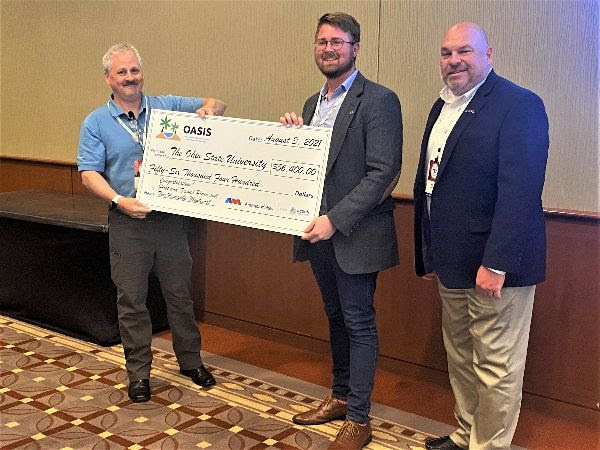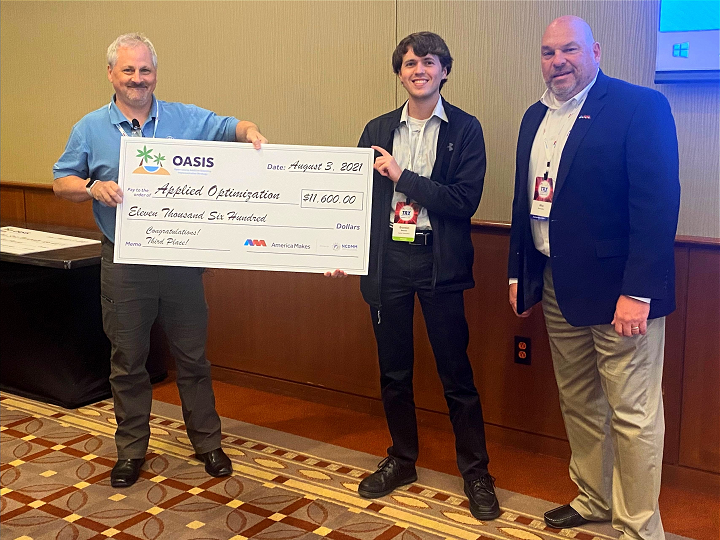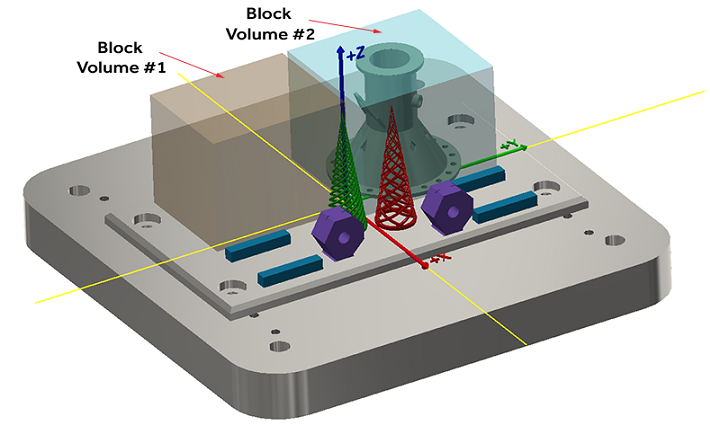In order to advance and optimize additive scanning path development in laser powder bed additive manufacturing, America Makes, together with the Air Force Research Laboratory (AFRL) and GE Global Research (GEGR), launched the Open-Source Additive Scanning Implementation Strategy (OASIS) Challenge late last year. Now, they have announced the winners of the challenge at the America Makes annual Technical Review & Exchange (TRX) event. A team from The Ohio State University (OSU), and then a second OSU team, took first and second place, while a team from Applied Optimization, Inc. won third place; two other OSU teams received honorable mention awards.
“Continuing the advancement of open-source software and machine platforms for laser-based powder bed additive manufacturing is a priority for our industry and AFRL as the proprietary nature of commercial scan strategies inherently pose difficulties. The OASIS Challenge included learnings from three previous America Makes projects that were led by GEGR and built upon them to enable participants to devise innovative strategies, algorithms and methods to further advance this focus area,” said America Makes Executive Director John Wilczynski. ” All the winners of the OASIS Challenge developed new and well-synthesized open-source computer codes for outputting laser scan paths that will be instrumental in creating a body of work to be leveraged industry-wide.”
The point of this challenge, which leverages a previous America Makes project related to open-source software, was to create open-source algorithms and computer codes in order to optimize scan strategies. In so doing, the goal was to advance both temporal and spatial thermal management in laser-based powder bed 3D printing and improve the geometric properties, structure, and surface of 3D printed parts made with this particular technology
The OASIS Challenge states, “Together, the Air Force Research Laboratory (AFRL) and America Makes have made tremendous progress in advancing open framework software, controls, and equipment with multi-laser metal additive manufacturing (AM). However, most commercial scan strategies are proprietary making it difficult to fully understand the process. Therefore, development is necessary in the open-sector to realize improvement in microstructural homogeneity, surface roughness, geometric tolerance, and distortion via optimization of scan strategies.”

Team representatives from Ohio State University were recognized at the recent America Makes Technical Review & Exchange event.
Teams had to visit Github to download the project data, and work with two challenge parts, which had to be printed out of Ti-6Al-4V material. Then, they were challenged to develop an open-source Python, Java, C#, or C++ code that would generate XML and SVG files, and submit their work by March 1st of 2021. The submissions were evaluated based on code quality and run-speed, ductility, geometric fidelity, porosity, surface finish, and tensile strength.
The first place OSU team was awarded $26,600 in funding, while the second place OSU team received $16,600 and Applied Optimization got $11,600 for its third place win. Each of the two OSU teams that won an Honorable Mention were awarded $6,600 in funding, for a total of $68,000 in total funding from the AFRL. The winning solutions will also be integrated into the America Makes AM Roadmap, and the America Makes Digital Storefront.

Team representatives from Applied Optimization were recognized at the recent America Makes Technical Review & Exchange event.
Congratulations to all the winners!
Subscribe to Our Email Newsletter
Stay up-to-date on all the latest news from the 3D printing industry and receive information and offers from third party vendors.
You May Also Like
Gorilla Sports GE’s First 3D Printed Titanium Cast
How do you help a gorilla with a broken arm? Sounds like the start of a bad joke a zookeeper might tell, but it’s an actual dilemma recently faced by...
Nylon 3D Printed Parts Made More Functional with Coatings & Colors
Parts 3D printed from polyamide (PA, Nylon) 12 using powder bed fusion (PBF) are a mainstay in the additive manufacturing (AM) industry. While post-finishing processes have improved the porosity of...
$25M to Back Sintavia’s Largest Expansion of Metal 3D Printing Capacity Since 2019
Sintavia, the digital manufacturing company specializing in mission-critical parts for strategic sectors, announced a $25 million investment to increase its production capacity, the largest expansion to its operations since 2019....
Velo3D Initiates Public Offering in a Bid to Strengthen Financial Foundations and Drive Future Growth
Velo3D (NYSE: VLD) has been among a number of publicly traded 3D printing firms that have attempted to weather the current macroeconomic climate. After posting a challenging financial report for 2023,...
































